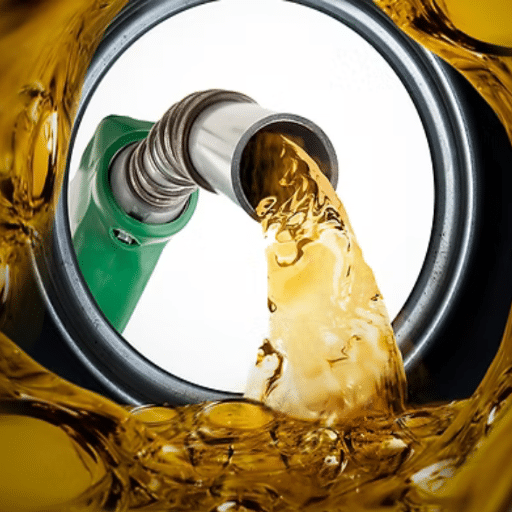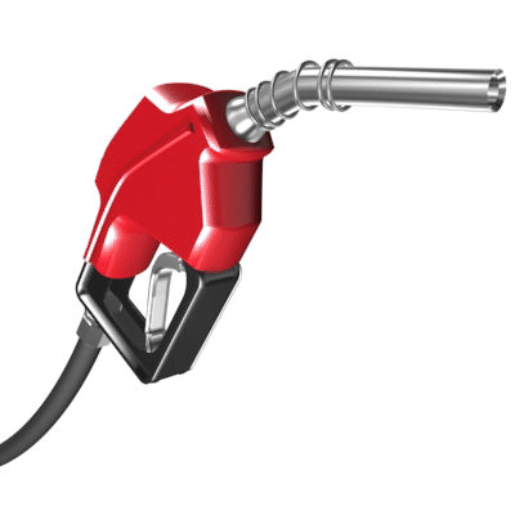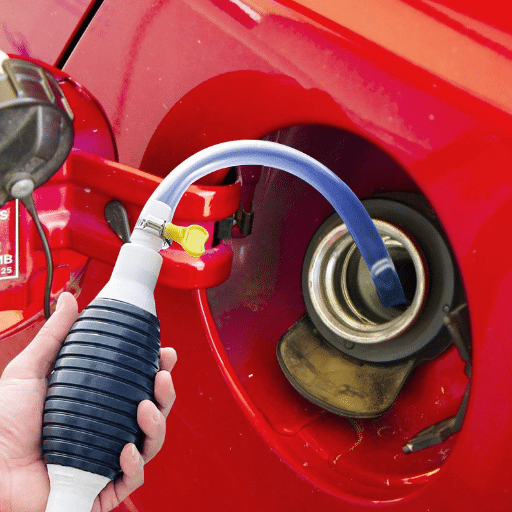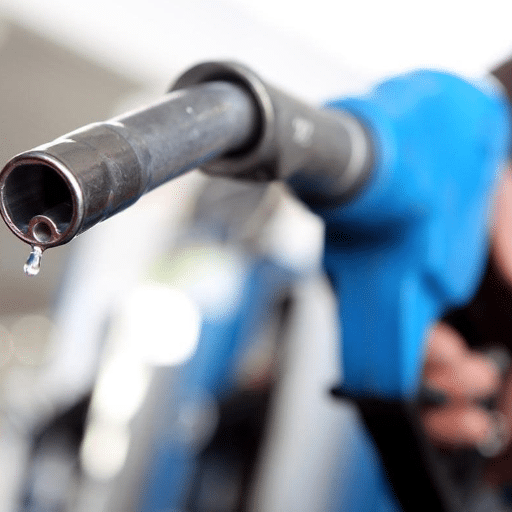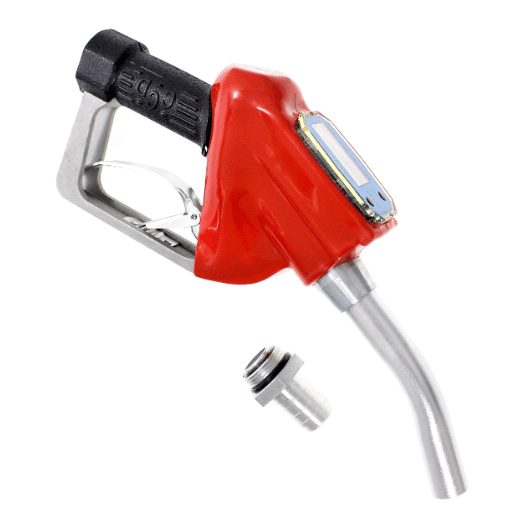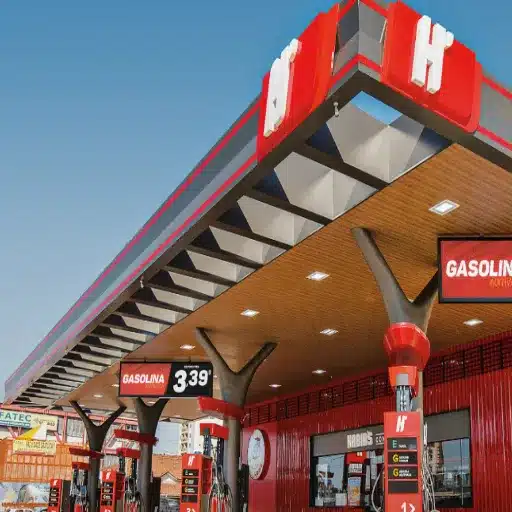The onset of a thunderstorm would present many safety concerns, especially regarding regular activities. The question commonly asked is: Can one pump gas during a thunderstorm? A thunderstorm, with its frightening combination of lightning, thunder, and heavy rains, can create dangerous conditions that many might never fully understand. This article delves into the science and safety aspects of refueling during a storm, exploring the risks, debunking myths, and giving practical safety tips. Even if you’re a seasoned driver or a curious reader, some nuggets herein will certainly prepare you with crucial information to go off into the darkened skies.
Understanding Thunderstorms and Their Risks
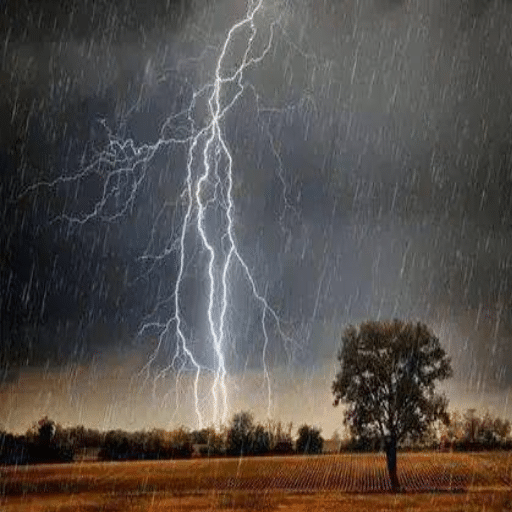
Thunderstorms are weather phenomena involving lightning, thunder, torrential rains, hail, or strong winds. They occur when warm, moist air is forced to rapidly rise, cool, and condense into storm clouds. Hazards associated with thunderstorms include the risk of being struck by lightning and consequent fires, injuries, or death, blowing winds that may cause property damage or allow debris to fall, and torrents of rain that lead to flash floods, making roadways dangerous to use. Understanding the underlying aspects of thunderstorms helps emphasize why staying cautious during storms should be taken seriously to minimize danger.
What Happens During a Thunderstorm?
Thunderstorms are severe weather conditions caused by a series of atmospheric processes. As the first atmospheric process, warm moist air moves up into the upper atmosphere to cool and condense to form cumulonimbus clouds. These storm clouds, depending upon their type, can reach approximately 40,000 to 60,000 feet or maybe more into the sky. The strong air motion created inside the clouds enhances convection and aids charge separation within.
Lightning is a vital constituent of every thunderstorm, and it occurs when such charges are discharged. Reputedly, the flashes of lightning can be measured at a temperature of about 50,000 degrees Fahrenheit, which is hotter than the surface temperature of the Sun. Within the United States alone, there appear to be roughly 20 million cases of lightning strikes in a year. Thunder refers to that loud, explosive noise that occurs as the moltenized air suddenly expands after being heated tremendously.
Besides, thunderstorms are often accompanied by heavy rainfall. Heavy precipitation rates can cause flash floods, which also stand as among the most life-threatening effects of severe storms. Flooding kills more people in the U. S. each year than any other hazard associated with thunderstorm risks, is the statement made to the National Weather Service. Other hazards include hail. Hail can occur when water droplets are circulated in the storm’s strong updrafts and freeze into ice before coming down to the ground, where it may cause property damage and injury to individuals.
Severe thunderstorms may also produce straight-line winds or tornadoes. Straight-line winds, however, with downdraft genesis bringing them to more than 60 miles an hour, can uproot trees and rip roofing of buildings. Tornadoes form when wind direction and speed change at different altitudes, instilling rotation within the storm; they are less common but are violent funnels of air that destroy anything in their way with winds over 200 miles per hour.
From the formation of clouds to the associated dangers, understanding the entire process is important in illustrating just how complex and powerful thunderstorms are. Developed forecasting efforts allow for better monitoring, ensuring life-saving warnings are heeded the precautionary to are taken to ensure safety.
The Role of Lightning in Storms
Lightning is a gorgeous and necessary piece of a thunderstorm, energized within these mighty weather systems. A lightning discharge happens when there is a separation of electric charges within the thundercloud. Usually, the upper part of the cloud receives positive charges, while the bottom side of the cloud is negatively charged. The imbalance of these charges-above, within, or below the cloud-must bring forth a quick release of energy in the form of a bolt of lightning.
Every lightning bolt travels and heats the air surrounding it with temperatures as high as 50,000 degrees Fahrenheit, five times hotter than the sun’s surface. The surge in air pressure causes the sudden expansion of air that generates the sound or arrival of thunder. About 8 million lightning strikes take place all over the planet in a year, of which the highest concentration is at the tropics, especially near the equator, where warm, moist air does encourage thunderstorm activity.
Lightning is also one major factor to keep the electrical balance intact by sending back huge amounts of negative charges to the surface. But then it also comes with hazards: for instance, it may start wildfires, cause power failures, and kill people. The meteorological data from recent years show that 20-30 people die each year from lightning in the U. S. alone, while countless others are injured. Fortunately, improvements in detection technology- advanced radar and satellite systems-have helped in tracking lightning activity and issuing timely warnings against lightning hazards.
Understanding lightning behavior in storms not only demonstrates how pivotal it is to weather formation but also provides emphasis to continue its research so that, ultimately, it serves mankind.
Why Gas Stations Are Vulnerable
During lightning storms, gas stations continue to be very much at risk because of their nature and materials lying around on-site. Gasoline is an extremely flammable substance, and the vapors that are released in an open area during fuel dispensing can be ignited easily. Lightning from a single flash not very far away could become an extremely dangerous ignition source if both safety protocols and precautions are not adhered to. Studies have found that another hazard that complements this risk is static electric buildup, in most cases caused by consumers not grounding themselves simultaneously before the crescendo of refueling.
Moreover, the large-scale application of metal equipment at gas stations, including underground storage tanks, fuel dispensers, and canopies, allows for the conduction of a lightning strike. A facility without proper grounding in its infrastructure with installed lightning arrestors will suffer considerable damage. According to NFPA, fires and explosions associated with combustible fuels number in the thousands every year, with lightning possibly acting as the ignition source. From that vantage, proper preventive measures consisting of surge arresters, grounding mechanisms, and periodic safety inspections become the key attempts in minimizing these risks.
Modern safety standards and public awareness programs seek to reduce the vulnerabilities of gas stations and offer protection to both the employees and the patrons under adverse weather adversities.
The role of gas stations during storms
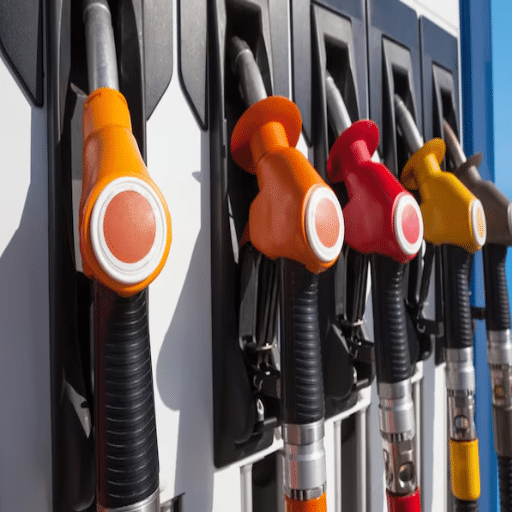
Given the high demand for emergency fuel, gas stations hold a vital role during storms for various purposes: they fuel emergency response personnel, utility repair crews, and residents who may be preparing for or recovering from severe weather. They may even stay open to be able to assist with evacuations, keeping the affected communities well supplied. Working well in this realm implies that the gas stations have to put a premium on safety and backup power so they can continue to dispense fuel even during power outages.
Gas Station Design and Lightning Protection
Designing a gas station with appropriate lightning protection measures is a necessity to ensure safety and operational reliability. Gas stations have underground storage tanks, fueling systems, and metal canopies-all equally vulnerable during a lightning strike. To lessen such risk, grounding systems are installed that safely dissipate electrical surges caused by lightning into the earth, thus lowering the possibility of a fire or explosion.
Most modern gas stations install surge protectors on their electrical systems and lightning arresters on canopy structures to ensure against damage. Moreover, adherence to national safety standards, such as those promoted by the National Fire Protection Association (NFPA), will guarantee the correct installation of protection systems. Keeping clearance distances between fueling equipment and other structures and conducting regular inspections will foster even greater safety.
Electric infrastructures, when installed with lightning protection systems, assure fewer risks in gas stations while uninterrupted service is maintained, and the safety of customers and employees is given priority during adverse weather.
Emergency Protocols for Gas Station Employees
Gas station employees are largely responsible for safety during emergencies; clear instructions or protocols can reduce risk and response times considerably. Here are some detailed steps in the event of an emergency at a gas station:
- Fire-Related Emergency
Immediate Action: Activate the emergency shutdown systems to halt fuel flow before it can exacerbate the situation. Immediately inform the fire department.Fire Extinguishers: The correct type of fire extinguisher must be made available. Class B extinguishers, suitable for flammable liquid fires, should be within easy reach. Employees should be properly trained in the use thereof to extinguish smaller, manageable fires.Evacuation: Use the gas station’s evacuation procedures to relocate customers and employees to safety out of danger zones. - Spills of Fuel
Contain the Spill: Quickly containing the spill is best accomplished with the use of a spill kit. Absorbent materials must be laid around the ignited liquid spill, for example, absorbent pads or booms, depending on the nature of the spill, to prevent its migration.Ventilation: See to it that proper ventilation systems are in place to lower the accumulation of flammable vapors in that particular area.Notify Authorities: Inform the local environmental or emergency services if this is required by law.Documentation: In record-keeping, maintain an incident report that will contain the quantity of the spill and how the spill was handled as per industry standards. - Severe Weather Events
Lightning Storms: Fuel pumps and electronic systems should be switched off to minimize the chance of electrical surges or sparking. Store employees should take shelter inside the store or another approved safe area.Flooding: Drainage vent pipes and underground tanks should be sealed to stop water contamination. Follow evacuation procedures should the situation get worse. - Suspicious Activity or Threats
Stay Alert: Be alert for any suspicious activities, be it unattended bags or unusual behavior near fueling stations. When necessary, alert law enforcement.Minimize Danger: Lock the cash registers, limit access to the storage area, and thereby limit exposure to potential threats.Communication: Inform authorities and coworkers discreetly via the pre-agreed emergency communication routes. - Medical Emergencies
First Aid Response: Train your employees in basic first-aid procedures, such as CPR, to assist those in need until paramedics arrive.Emergency Contacts: Keep a list of emergency telephone numbers within reach, and call for professional medical help when needed.Stay calm: Support the victim, keeping safety for everyone present on site. - Training and Drills
Emergency procedures should be taught regularly to all employees. Drills build preparedness through reinforcement, ensuring timely and effective actions.
A typical synonym of OSHA training is Safety training, so workers can provide the necessary protections to themselves and their working environment. The term “OSHA” stands for the United States government’s Occupational Safety and Health Administration.
Training should also include the practical application of what’s learned so that procedures are reviewed and practiced as often as possible. It’s the sooner and more consistently companies respond to emergencies, the save lives.
Every gas station should have Emergency Protocols to Enhance Safety Measures at the gas stations backed by training and adherence to regulations. It will prepare all Employees and Customers to give emergency assistance in any incident speedily and safely.
Community Resources and Support During Severe Weather
Community resources become crucial when a disaster strikes to secure residents and cater to their basic needs. Local government agencies such as city or county emergency management offices usually provide timely updates about weather developments, from issuing weather warnings to announcing evacuation routes to informing people about their shelter options. Organizations such as the American Red Cross open emergency shelters for the people, provide first aid, and work on recovery from emergencies. Utility companies may broadcast information about power outages as they happen, as well as restoration efforts, so that citizens may plan accordingly.
Some online tools, including FEMA’s mobile app and state-specific emergency alert systems, enable residents to receive warnings, locate emergency services, and obtain safety tips. Additionally, community organizations and nonprofits often ensure delivery of food, water, and medical supplies to those in need. On these fronts, opposite forces-government agencies, private corporations, and local communities-join hands for people to be fully supported and remain safe and aware amid severe weather conditions.
Common Myths About Pumping Gas and Lightning
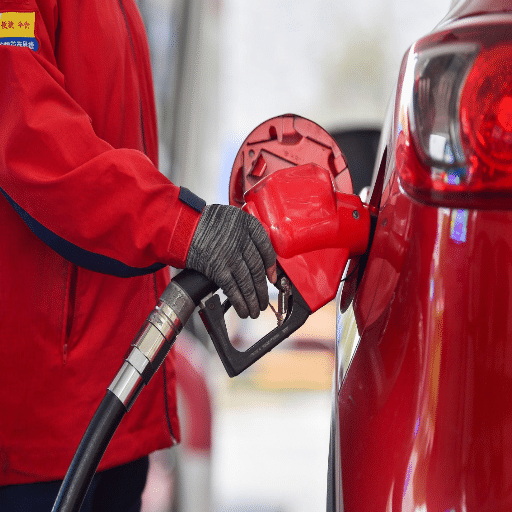
This is just one of the myths- that talking on a cell phone while pumping gas sparks a fire, especially during a lightning storm. However, there is no proof to support this. Modern cell phones do not produce sparks strong enough to ignite these gasoline vapors, but you should not be distracted at the pump as a matter of safety.
Another misconception is that lightning can directly ignite gasoline at fuel stations. Lightning can be a hazard in an open area, causing fires under special cases; however, gas pumps are normally equipped with grounding systems that prevent such occurrences.
At last, some think that touching your car during a lightning storm while pumping gas increases the chance of electrocution. Cars act as Faraday cages and are thus generally safe for those inside. However, you would still be better off inside during a storm rather than outside near a car or a fuel pump.
Debunking Misconceptions
Gas pumps are engineered with an array of safety features in order to minimize vulnerabilities, one of which is systems that prevent static electricity from accumulating. Static discharges that cause fires at a gas station are very few and far between; most causes of ignition are linked with unsafe handling and unsafe practices, like re-entering the vehicle while fuel is flowing without first discharging static by touching metal.
Well, given the matter of electrocution during a lightning storm, one must remember that cars act as Faraday cages. They channel the lightning around their outer shell rather than through to the occupants inside. But, since you are just outside near a car or fuel pump, it leaves you more vulnerable to being hit by lightning. One must always be inclined to seek shelter inside. In all honesty, the gas station most definitely carries the least risk of being directly struck; however, you should still not dare to be out amid storms while pumping gas. Safety regulations, combined with engineering, make gas stations quite safe, but one should still consider taking weather precautions.
Facts About Gasoline and Lightning Strikes
Gasoline is highly flammable, and so are safety measures at gas stations. Despite the common beliefs, gas stations are grounded and fitted with safety systems to minimize the possibility of ignition from lightning. Lightning can produce temperatures as high as 50,000°F, which is much higher than the ignition temperature of gasoline vapors, being about -45°F. Aided by the systems for proper ventilation and vapor recovery, modern-day gas stations disperse whatever flammable vapors there might be.
A lightning protection system protects good gas stations that have metal canopies and grounding rods to safely dissipate electrical energy from a lightning strike into the ground. According to the National Weather Service, these safety features are important since lightning-related accidents at fueling stations are extremely rare; however, it is advised not to touch metal objects or pump gas during a thunderstorm since direct exposure to lightning-infused currents could seriously injure a person. Indeed, these could be the precautionary measures to minimize the risks posed by gasoline and lightning.
Understanding the Real Risks
When gasoline stations and thunderstorms are concerned, the actual hazards related to lightning rarely occur due to modern safety precautions and operational standards. The latest figures show that there is a one-in-1.2-million chance of being struck by lightning during any particular year. The danger arises from situations wherein lightning strikes either the fueling station itself or some other nearby structures, creating a ground current capable of harming persons in the vicinity.
Studies show that metal objects, wet surfaces, or anyone in direct contact with some conductive material nearby could increase electric injuries. For example, a lightning strike could travel along conductive pathways, such as piping or electrical wiring, to places that might seem safe.
Furthermore, lightning fires usually occur in residential and forest areas; however, such inspections show that commercial locations, including fuel stations, face some threat from lightning strikes. An approach to minimize risk includes ceasing the pumping of gas during a thunderstorm, ceasing the use of mobile phones, and avoiding any contact with metal surfaces.
Using additional safety technologies like grounding and flame arrestors also reduces the likelihood of an incident. Nowadays, constant adherence to such safety regimens may enhance public safety and instill confidence in customers in the modernization of regular fuel stations during adverse weather.
Safety Considerations at Gas Stations
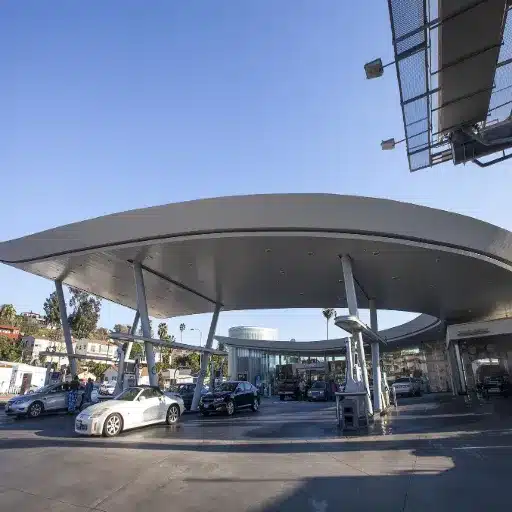
- Turn Off the Engine – In fact, to avoid potential ignition sources, turn off your car engine whenever you refuel.
- Do not burn – Fumes might ignite if someone accidentally lights a cigarette at a gas pump.
- Use Approved Containers – When filling up a portable fuel container, always use only an approved container and make sure to follow the proper procedures so as to avoid spilling.
- Avoid Static Electricity – Get rid of static electricity by touching anything metal away from the nozzle before refueling.
- Avoid Static Re-Formation – Avoid static build-up by never re-entering your vehicle while filling it.
These guidelines will ensure a safer experience at the gas station while reducing the potential hazards.
Assessing the Risks of Pumping Gas
Simply pumping gas may seem simple and straightforward to a person, but this task is quite controversial because several risks are involved in doing it without common safety precautions. One of the most important aspects is the potential fire hazard, mainly caused by static electricity or accidental spillage of fuel. Extended exposure to gasoline vapors can also cause health hazards because these vapors contain chemicals like benzene known carcinogen can cause adverse health effects when inhaled in large concentrations. Environmental repercussions, such as contaminants entering the soil or water bodies due to fuel spillage, also make it crucial to handle fuel with utmost care and caution. So always remember to ground yourself before fueling, keep away from overfilling, and make sure to handle fuel with care to prevent any spillage and release of vapors. With vigilance and safety adherence, you will surely enrich your safe and responsible refueling experience.
Grounding and Lightning Protection at Gas Stations
Establishing the grounding and lightning arresting system is among the very basic measures to be taken toward safety in a gas station. It is for the surface grounding of static electricity being generated during fuel transfer, thereby preventing sparks from forming in flammable base vapors. The lightning protection system is intended to protect the station and its neighboring areas by absorbing lightning surges and directing them to the ground.
For greater safety, all fueling equipment should be fully grounded, and inspections should be made periodically for wear and corrosion. Also, gas stations should consider installing surge-protection devices and ensure that storage tanks and piping systems have been bonded to eliminate any potential hazard. Adhering to the guidelines set forth by industry standards that include NFPA and API guarantees the safety and security of customers as well as employees. When routine maintenance combines with sophisticated safety systems, risks are offset, thus safeguarding life and property.
What to Do If Caught in a Storm
If one is struck by a storm, finding shelter with utmost speed becomes the primary concern. Move inside or into a sturdy building while avoiding open fields, hilltops, tall trees, or metallic objects that may attract lightning. If no shelter is available, crouch down on the balls of your feet, keeping your hands over your head; minimize your body’s contact with the ground to avoid injuries from lightning strikes.
Steer clear of water bodies, such as lakes or rivers, and also use no electronic devices or equipment that are plugged in, as these can pass the electric charge. Stay informed of weather conditions on a battery-powered radio or your phone if it is safe to use. It is best to wait for the storm to completely pass and not to leave the shelter until it is safe. If you remain calm and adhere to these steps, you may remain safe through adverse weather conditions.
Guidelines for Pumping Gas During a Storm
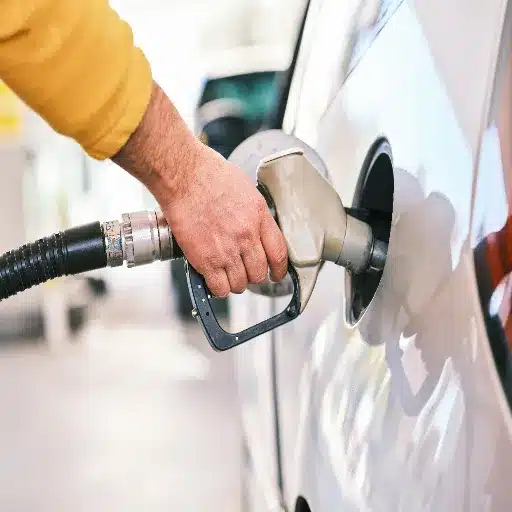
- Avoid Pumping Gas During Lightning – If there is lightning in the area, do not pump gas. Lightning poses a fire hazard around flammable materials like gasoline.
- Stay Alert to Weather Changes – Monitor the weather and remain safely indoors until it is safe to go to the gas station.
- Keep Safety Equipment Handy – If you cannot avoid pumping gas during a storm, make sure that you observe all safety precautions posted on the station and do not use electronic devices.
- Follow Proper Refueling Procedures – Turning off your vehicle’s engine before pumping gas and properly handling your gas nozzle to avoid any spillage.
Whenever possible, always deem your safety and the safety of others around you, even before refueling, if conditions are not conducive.
When Is It Safe to Pump Gas?
Usually, pumping gas is safe if basic safety instructions are followed and weather conditions are not threatening. Pharmacists should not be operating a vehicle or, if standing in the area where fuel should be dispensed, none should smoke or use any electronic device for fear of spasms or explosion, worth the risk. In any case, if lightning or heavy rain accompanied by gusty winds occurs, one should look elsewhere to get fuel. After an extreme weather event, one must first evaluate whether the refueling station is safe and has no visible dangers, such as fuel leaks. With a good knowledge of station hazards and policy, one should be safe while refueling.
Precautions to Take While Pumping Gas
Before servicing a vehicle or pumping gas, I will make sure to switch off the engine and not smoke anything or use anything prone to sparking. I then put my electronics away. Refueling during nice weather is what I do; I check to see whether the station looks safe, especially after extreme weather conditions. The awareness and adherence to safety precautions help me provide a safe refuel operation, uninterrupted.
Alternatives to Pumping Gas in Bad Weather
In adverse weather conditions, some practical measures can be taken to avoid gas pumping under the guise of unsafe conditions. Refuel during the good weather whenever possible so as to limit one-a-wrong-to-be-storm exposure or extreme cold. In emergencies, stop by full-service stations to have an attendant run the pump for you. There is also a possibility of hiring mobile fuel services in several states, where gas delivery straight to your car is done by professionals. On the other hand, keep your gas tank always more than half full. This planning will reduce the pressure of having to stop on the road to refuel when the weather turns ugly. All these options can keep you safe and help facilitate more convenient times.
Reference Sources
Frequently Asked Questions (FAQs)
Can one safely pump a gas during a lightning storm?
It is generally unsafe to pump gas during a thunderstorm. A lightning bolt can strike nearby, its electric charge conducted to the ground by the metallic parts of the gas station or the fuel pump. This can result in electrocutions or sometimes fires.
What happens when lightning strikes a gas station while pumping gas?
Direct lightning strikes might severely damage or start a fire in a gas station. The fumes from gasoline are highly combustible; a lightning strike would certainly ignite a dangerous situation, even worse if there’s someone pumping gas during that time.
Should I keep away from the gas pump during a thunderstorm?
Indeed! It is better to be far away from the gas pump during a thunderstorm. Direct hits by lightning and stage-high voltage possibilities arise in such weather, and one just should not tempt one’s fate by pumping gas in it.
How close can I be to a gas station during a thunderstorm?
The best option to ensure safety would be to stay well away from a gas station during a thunderstorm. Though no hard-and-fast rule exists, a distance of something like, say, around 30 feet from the pumps and any metal object could help ensure safety.
Are there lightning rods for protection against a sign station?
Most gas stations are capped with lightning rods to keep the damaging effects of lightning strikes from directly to the station. These rods allow the electrical current to run safely into the earth, thus preventing the stationary surface from catching on fire or causing injuries.
Will pumping gas during rainy weather increase danger?
Mostly, pumping gas during rainy weather would increase danger. The possibility of lightning exists at just about any given time. Even if it were not actually storming, a storm in the near vicinity can generate lightning that can strike without preamble. Weather conditions must be ascertained before one pumps the gas.
What is the minimum safe distance from the gas pump during a thunderstorm?
While there is no officially prescribed minimum distance of the safety sphere, it is recommended that one remain at least 30 feet away from the gas pump during a thunderstorm, so as to be least affected in case of a lightning strike lightening discharge.
Can lightning really start a fire in a gas station?
Yes. Lightning will cause a fire if it strikes down or sets ablaze gasoline vapors at a gas station. The situations become exponentially hazardous when someone is pumping gas in the middle of a storm.
In such a case, what does one do if stuck in these situations?
Whenever caught in the middle of a thunderstorm at a gas station, your best choice would be to get out of your vehicle and try to get shelter inside a building. Do not try to pump gas, as that would be the most unsafe act to do with lightning nearby.

